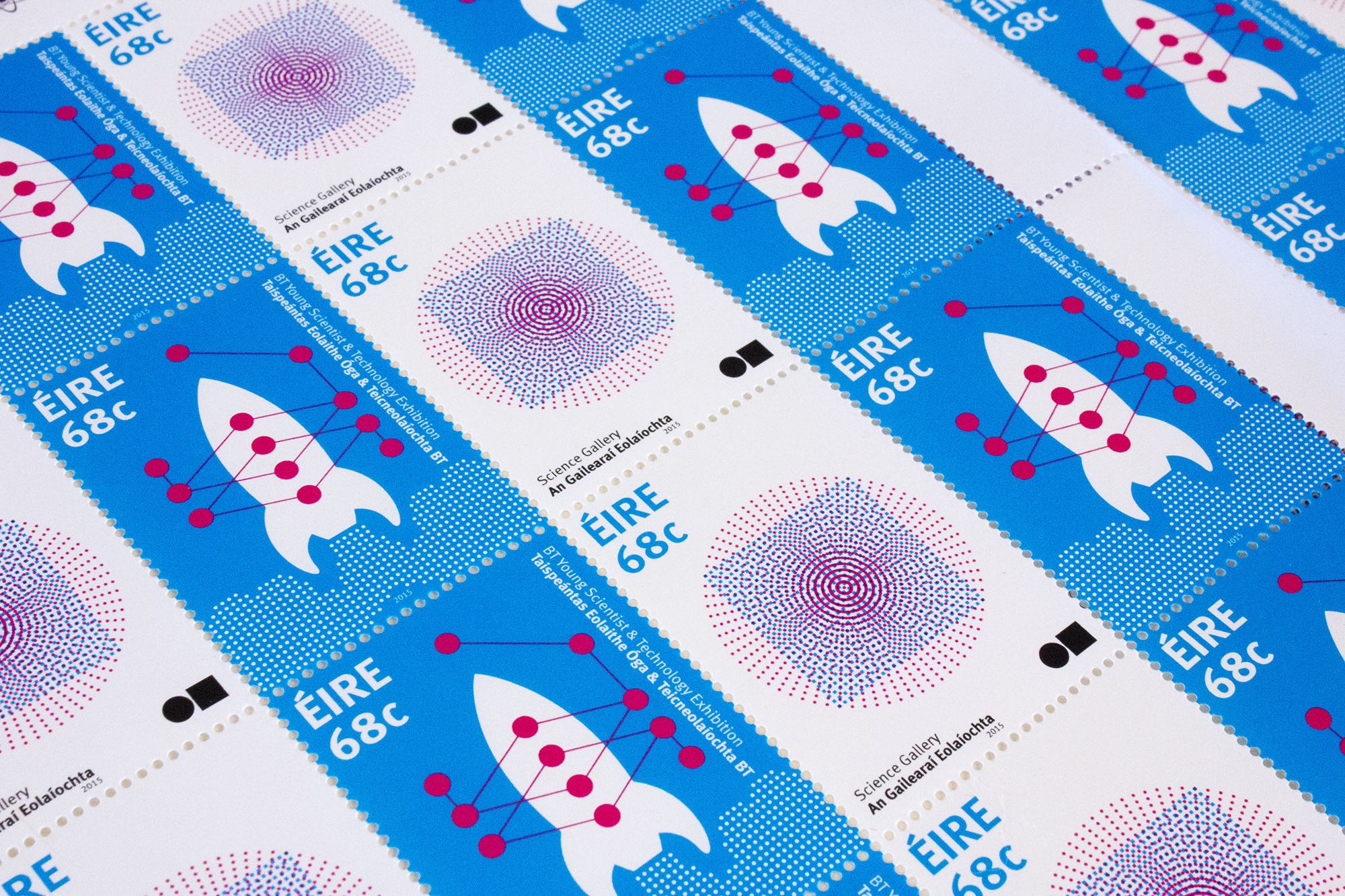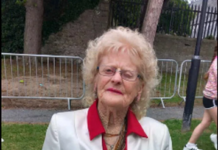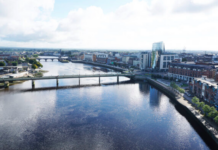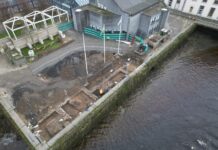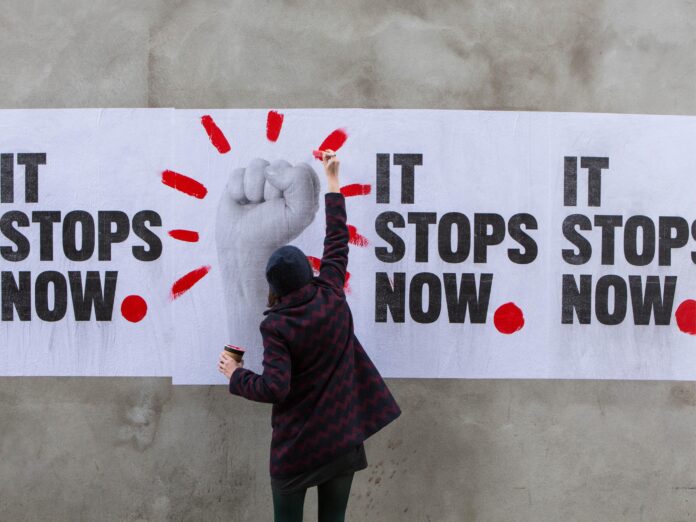
Map Irish Design, new research that examines more that 2300 design projects to reveal the impact of design on life, culture, business and society in Ireland over the past decade was recently launched.
The design projects form part of 100 Archive – an online archive of the best in Irish communication design.
Under the supervision of lecturer and course director Eamon Spelman, fourth-year Graphic Design Communication students from the Limerick School of Art and Design took materials from 100 Archive and researched everything from gender representation in the design sector to the most popular colours used in 100 Archive submitted projects.
From this, they created a suite of data visualisations to share their findings. A total of 18 data visualisations by the students are visible on the Map Irish Design site.
“The Colour of 2018 is a visual representation of all of the colours used in projects from the 2018 100 Archive. Colour choice is important.
“Colours can change the mood and how a subject is perceived. Designers choose colours carefully. From research, it is striking to note the frequency of bright, pop-y colours in some years in the 100 Archive and the use of pastel and dark colours in others,” says Student Ryan Drayne who looked at the most popular colours used in design projects.
Student Catherine Butler looked how women were represented in design: “I started looking within the 100 Archive selection to see does it represent the 59.5% male 40.4% female membership. It did not, with men’s work being selected more.
Why is this? When 70% of graphic design students are women, how come only 40% move onto working in the field with less again actually having leadership rolls, only 11%.
This data visualisation is to raise awareness to the gender gap in design, something that needs to change.”
Aideen McCole who led the project for 100 Archive says,“Thirty-one students each followed their curiosities through the 100 Archive materials and data and came up with a whole range of ways of communicating information in beautiful and interesting ways.
“While the 100 Archive has been gathering material since 2010, we have never had the time or resources to really look at it and see what it says about the design industry in Ireland and the impact it has on business, culture and society in this country.
“Design completely surrounds us, such as the coffee cups we drink out of, the websites we visit, the shopfronts we pass by and the signs which help us navigate our towns and cities.” she added.
From the tiny details on a postage stamp to a campaign seen on banners, billboards and buses across the country, the 100 Archive reflects just how much design affects us every day.”
Design for print, digital and web, typography, wayfinding and signage, packaging, identity and branding, editorial design, motion design and more are examined to show how business in Ireland continues to change, which social movements we care about and how we express ourselves creatively and culturally.
Director of the Creative Ireland Programme, who funded the project, Tania Banotti, says:
“Design in all its many iterations is integrated so firmly into our daily lives that we are often oblivious to it, however great design always stands out.
“It captures our imagination, changes thinking and behaviour and sets a standard for others to follow. Creative Ireland is delighted to support Map Irish Design.
“Not only does it shine a light on Ireland’s extraordinary design community, it celebrates their work and will provide inspiration for future generations of designers and makers.”she explained.
The project delivers insights on the design industry in Ireland and how design is used by various sectors, as well as revealing contemporary design to be a valuable artefact of social history; by looking at design we can see changes in how we consume, what we desire, where our priorities lie and more.
Pointing to the particular relevance of the project right now, Aideen McCole states: “Design affects all of us, all the time, and I think that’s been even more clear in recent times, from how we receive vital information — or dangerous misinformation — to the design of our cities.
“Can we all move around safely, with enough space for social distancing for example? Even the design of our social services, needed more urgently by more of us than ever before.
“We are massively impacted by the decisions people make to shape what things look like and how they work. Anything that helps all of us to recognise and understand that is valuable.
“I would add that to begin interrogating our surroundings from a design perspective is fascinating, and to do this now, while we’re all looking at super familiar environments non stop, can totally change how we see what’s around us.
“Map Irish Design is a resource to help us do that and help us see just how much design permeates the everyday.” Aideen said.
Some key findings include:
Cultural sector
While the cultural sector in Ireland may not offer design budgets of the size of other industries, it commissions a significant amount of high-calibre design. No other sector is more prevalent in the 100 Archive, with 39% of total submitted projects come from the cultural sector.
Social movements and Repeal
As well as business and culture, social and political movements are visible in the 100 Archive. The three referenda to dominate the news in recent years — Marriage Equality, Brexit and Repeal — all feature in some form, with Repeal being most dominant.
The 100 Archive includes the official Together for Yes identity as well as 12 other projects, many self-initiated projects by designers to raise awareness and/or funds for the campaign.
Architecture and construction
Few sectors have typified the boom, bust and boom again of Ireland’s economy more than architecture, property and construction, and this is clearly mimicked in the work seen in the 100 Archive.
Such work is almost absent in early years, with growth beginning again in 2013 and submissions for construction and property development projects growing steadily since then.
The exception is work coming from the areas of architectural education and the promotion and curation of architecture: this has been largely consistent, and abundant, since 2010.
Businesses and restaurants
Many types of businesses are visible in the 100 Archive but most notable might be restaurants, particularly for their apparent success.
While the adage that 90% of restaurants close in their first year is a wild overstatement, we are all aware that the restaurant business is a tough one.
Of the 62 restaurants around Ireland (and some overseas) whose identities were designed by Irish designers and submitted to the 100 Archive over the past 10 years, 87% were still in business before the shutdown.
Further, all food businesses (restaurants, cafes, produce) which cited sustainability in their submitted design projects were still in operation pre-shutdown.
Design Industry
The proportion of work coming from the rest of Ireland versus Dublin or overseas has more than doubled, from 8% in 2010 to 19% in 2018.
This is evidence of the work the 100 Archive has done to connect with regional designers, but could also indicate shifts in working patterns, the rise of remote working and a greater understanding among businesses around Ireland of the value of design.
In order to deliver the project, the 100 Archive assembled a multidisciplinary team: researcher Elaine McDevitt, videographers and animators Joe Coveney and John O’Connell of Studio 9, designer Keelin Coyle of WorkGroup and developer James Delaney.
On behalf of the 100 Archive the project was led by Aideen McCole with support from Stephen Ledwidge. A great number of designers, researchers and collaborators also contributed to the project.



